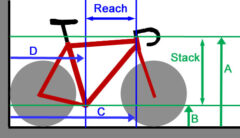Good bikepacking equipment doesn’t need to cost much. Reliability, functionality and repairability are often more important than weight or aerodynamics when choosing equipment for self-supported, ultra-distance bikepacking races.

Page Contents:
Cost
Although it is easy to spend a lot of money on a bike for bikepacking and the components and accessories (see the Costs of Equipment Used in Bikepacking Races page), many people have completed bikepacking races on relatively basic bikes with simple, low-tech equipment, including some people who have done very well and had very few problems along the way. You should remember that The Rider is always the most important element.
Weight
The What Determines Cycling Speed? section of this website investigates which characteristics have real (instead of assumed) effects on cycling speed for long-distance cyclists and what the relative importance of these effects is. A major finding is that weight is not a particularly important criterion because even a substantial weight saving of 1 kg will cause the average cycling speed over a complete route in a bikepacking race to decrease by less than 0.1 km/h, see The Actual Effect of Weight on Cycling Speed page.
Other Characteristics
Another important finding is that the importance of the Air Resistance of the Bike is small in comparison to the Air Resistance of the Cyclist, which is primarily affected by the Riding Position and choice of close-fitting vs loose-fitting Clothing. Tire choice is one of the most important component choices due to the significant differences in Rolling Resistance between different models.
It is far easier to make significant changes to overall riding speed by optimizing tire choice, clothing and riding position (which can each have large effects) than it is by worrying about the weight of each component and accessory (which can only have very small effects).
Measuring Progress
Cycling speed is not the only measure of progress in bikepacking races in which the clock never stops, the Moving Percentage (i.e., the relative amount of time spent on vs. off the bike) is at least as important, so the effect that equipment choices have on that should also be considered.
If two components perform similar functions and don’t differ by much on other characteristics, then I’ll always choose the version that is more reliable or easier to repair or find spare parts for. For instance, I like to use wheels that have a few more spokes than most stock models and whose spokes are of a more standard type and are reasonably easy to replace or adjust.
Conclusion
In summary, as long as a component is not excessively heavy or unaerodynamic then after Rider Comfort, the next most important criteria to consider are reliability, functionality and repairability. Obviously, different people will have different preferences and will make different equipment choices based on perfectly valid reasons, so it should be kept in mind that there are no “wrong” equipment choices – if something works for you then it doesn’t matter if other people do things differently.
Last significant page update: May, 2021
This page is in the Bike & Bike Components section. The next page in this section is:

